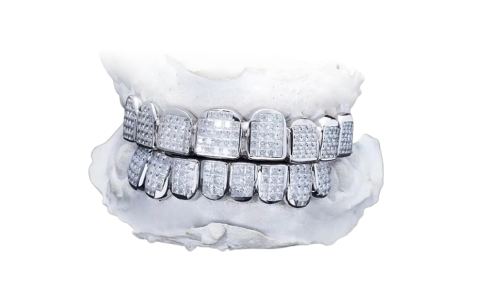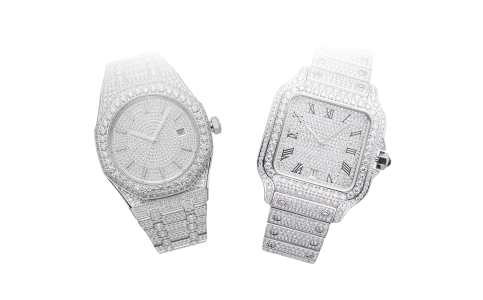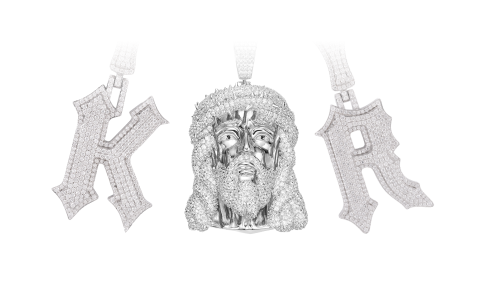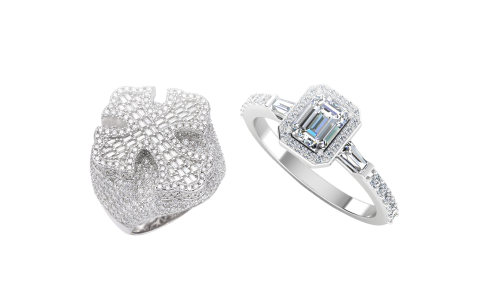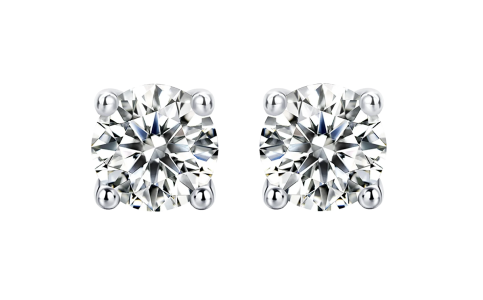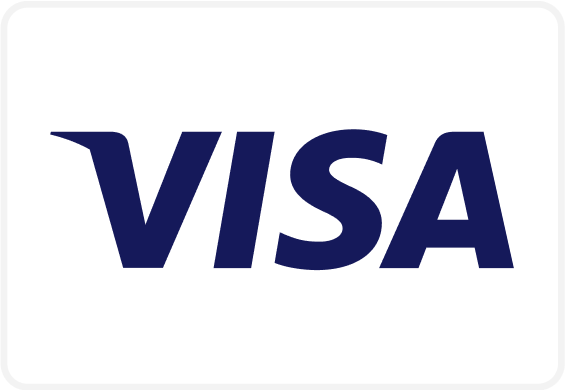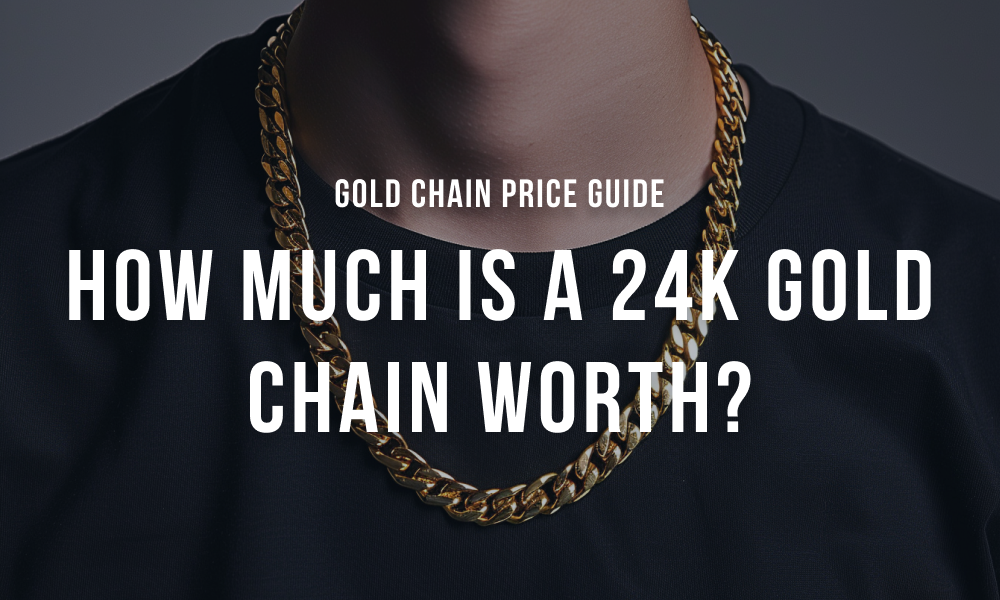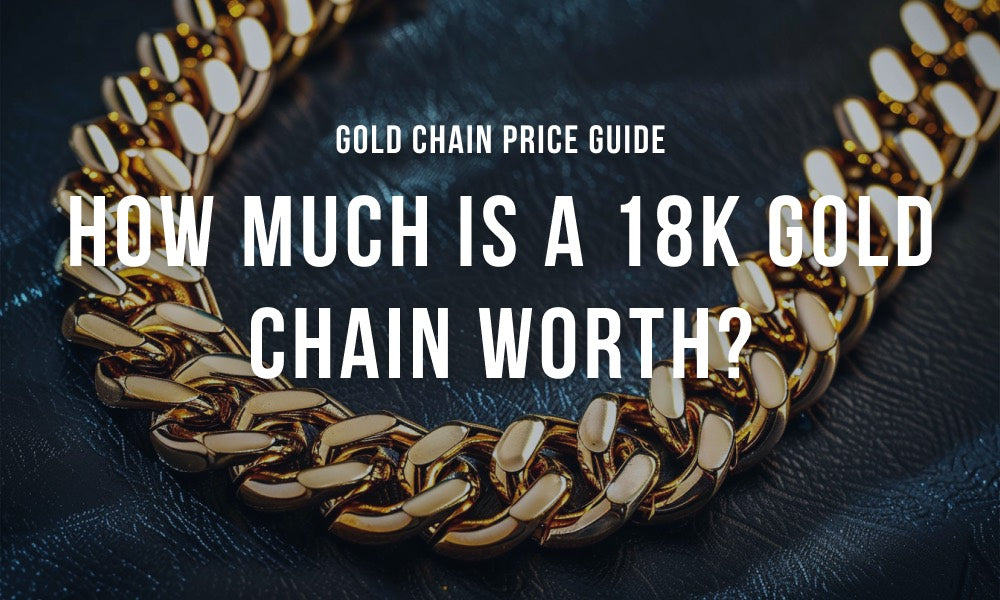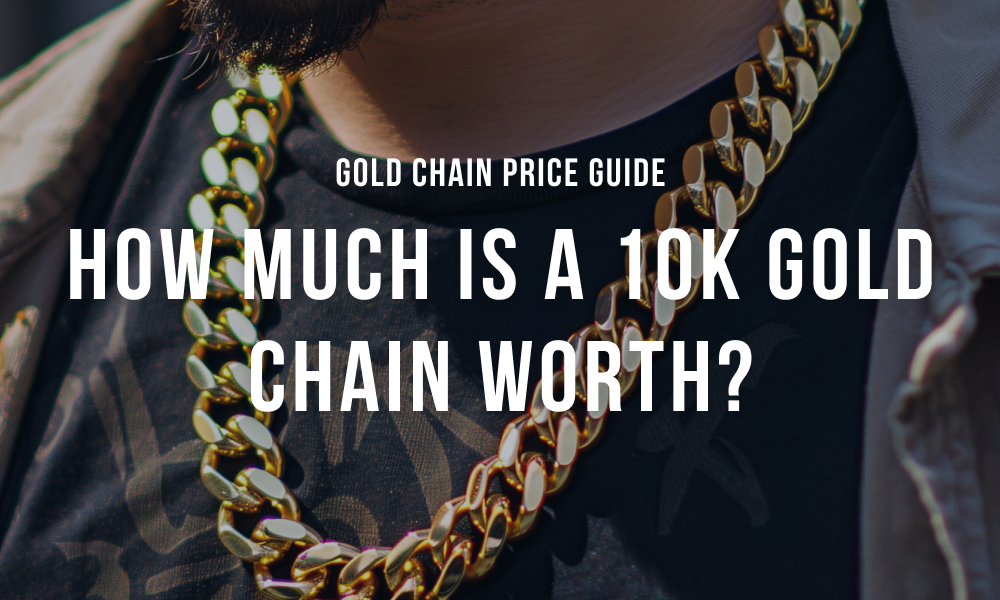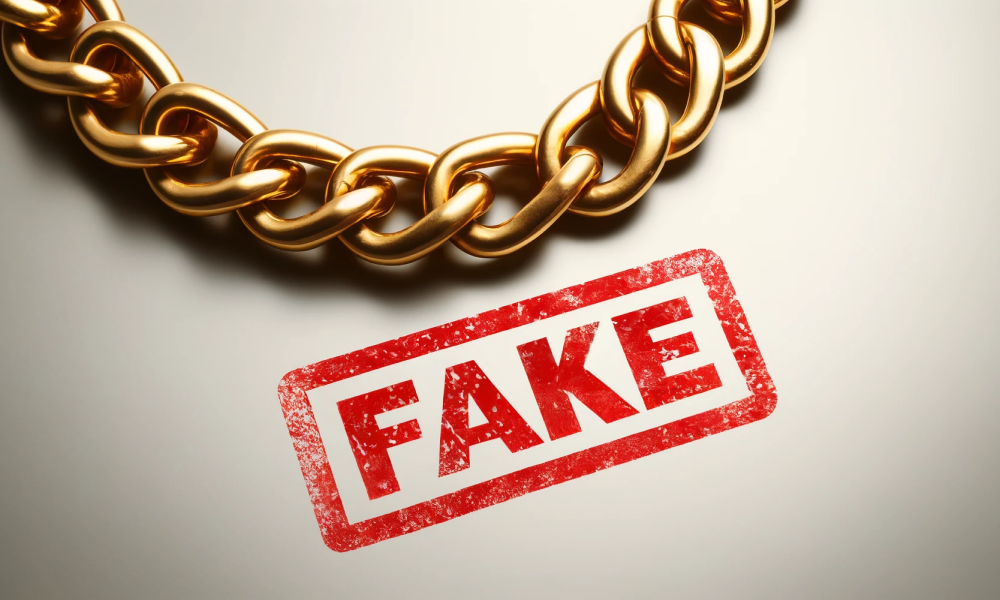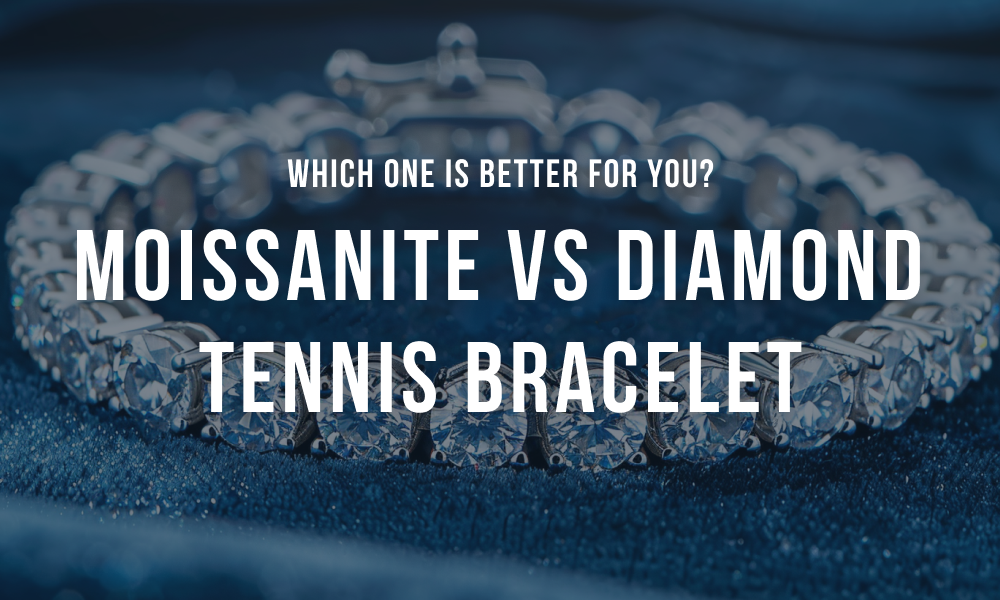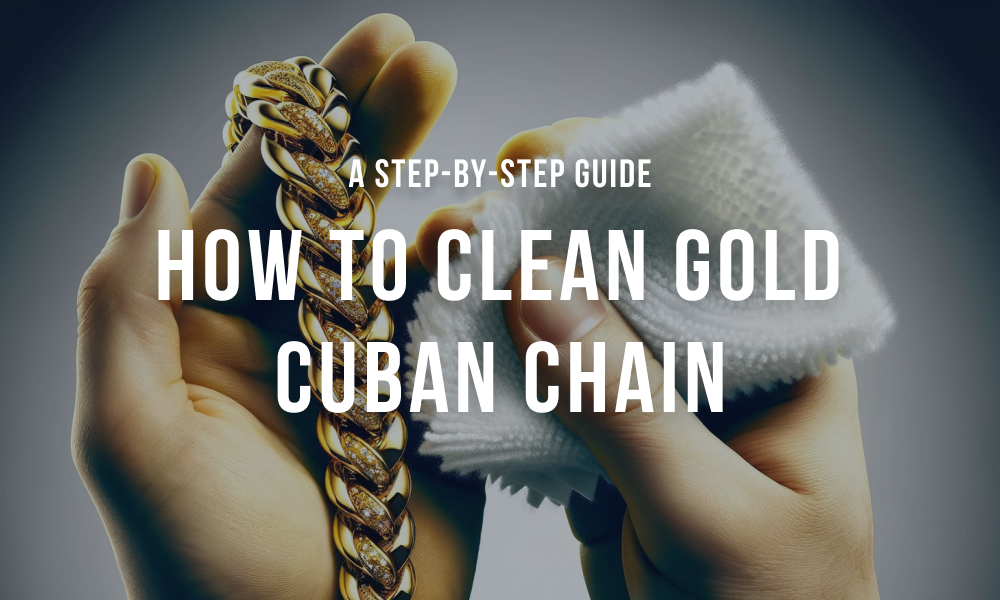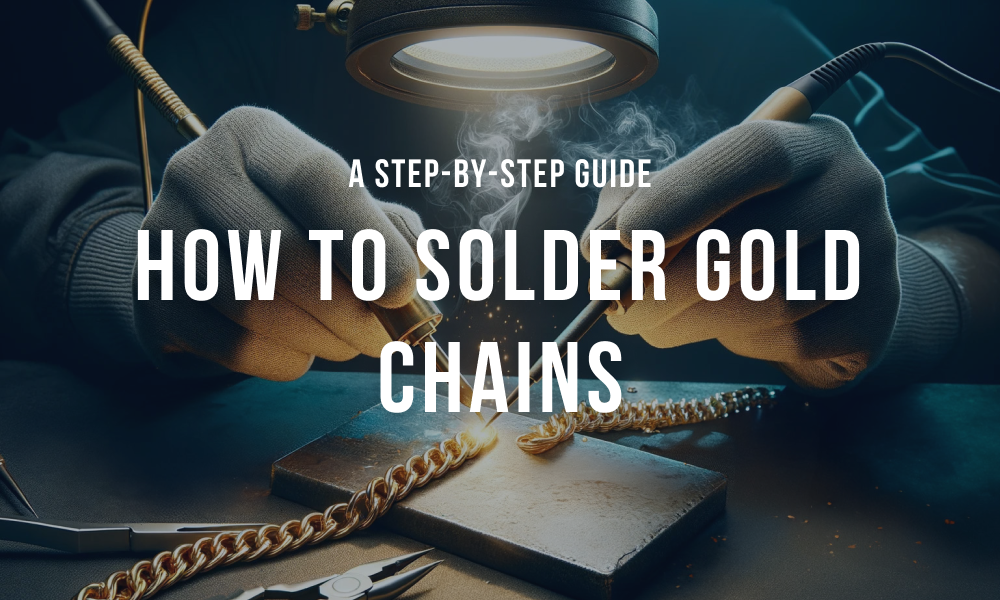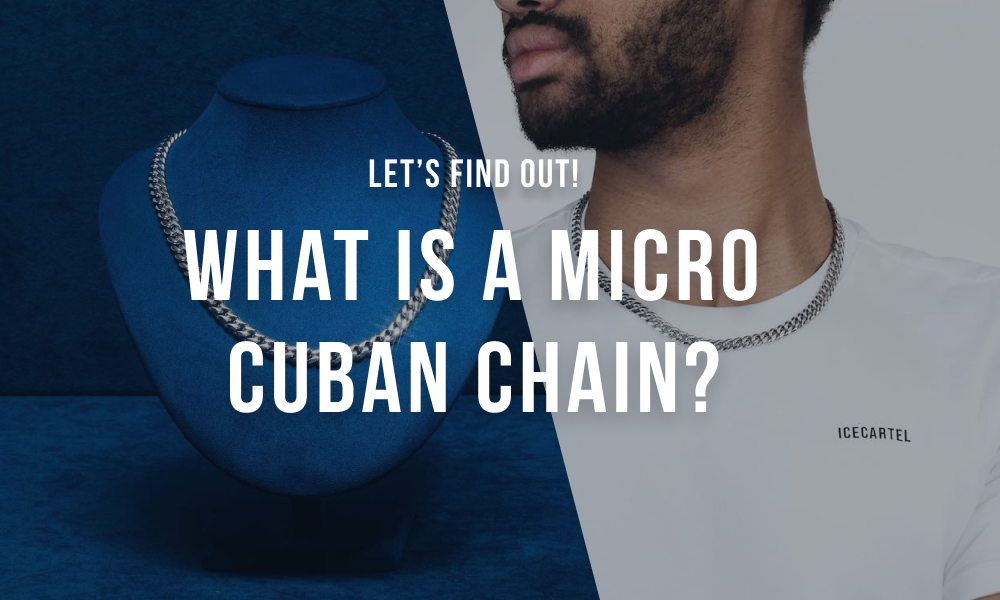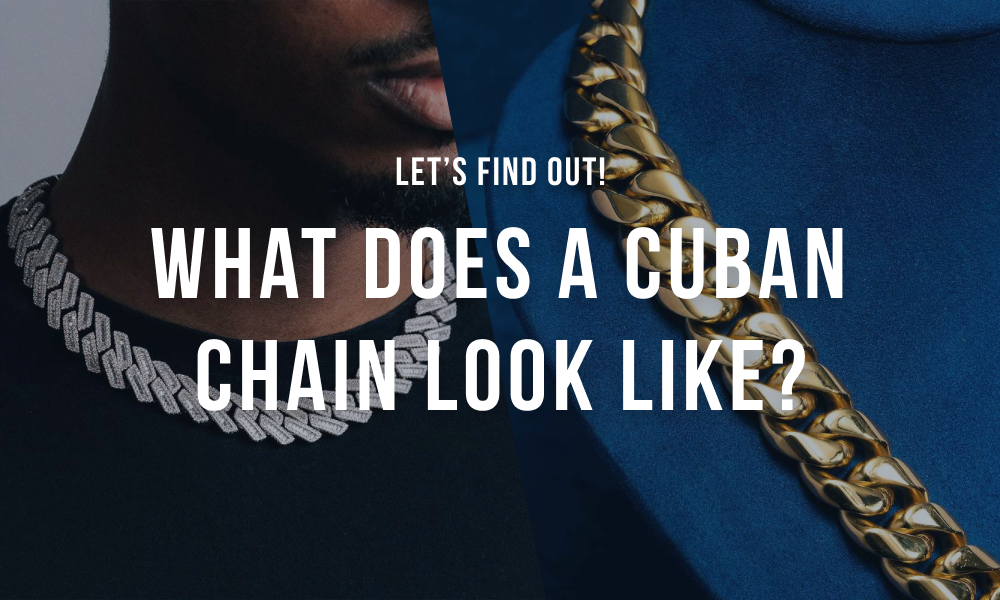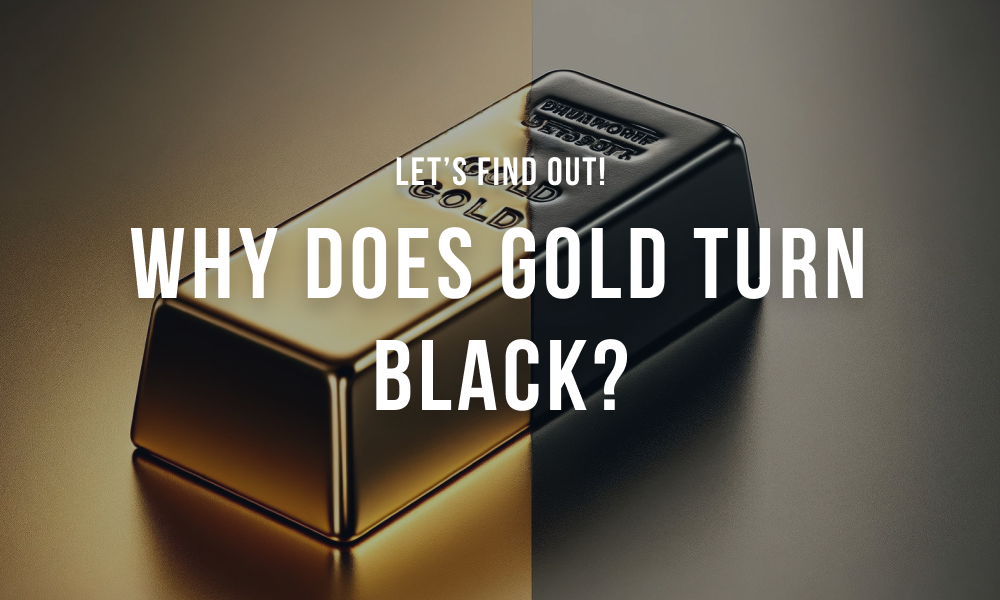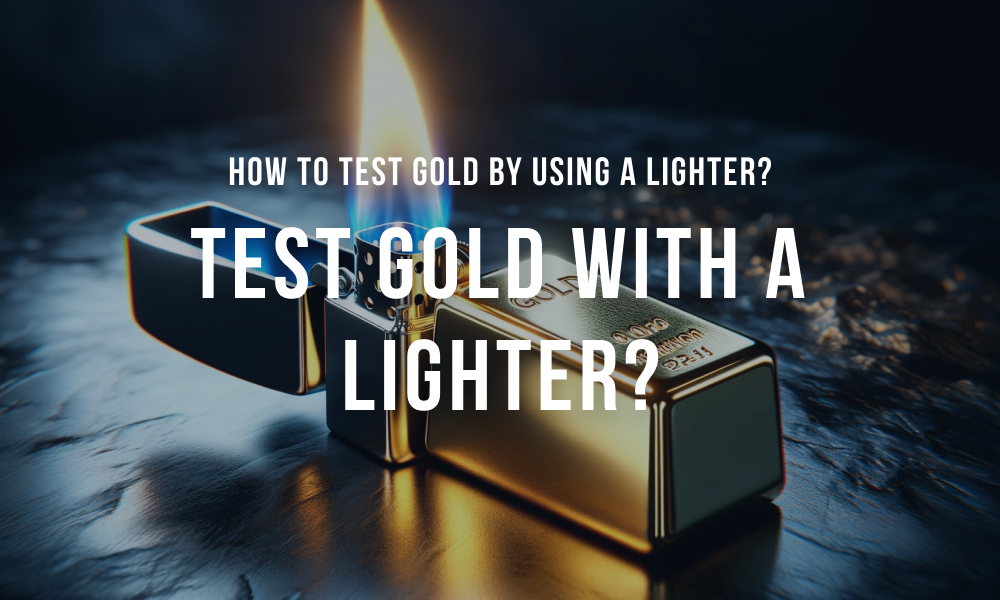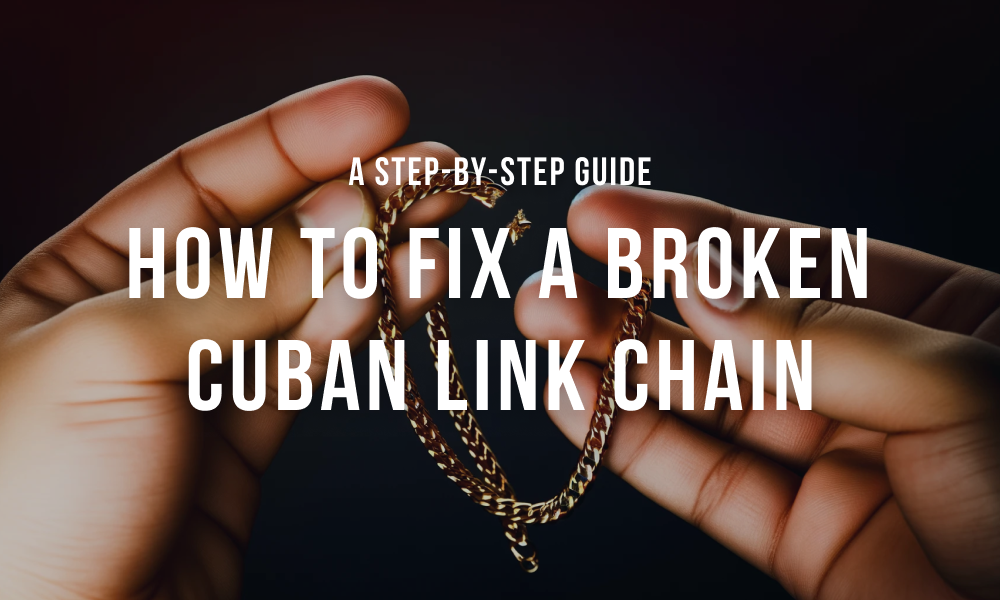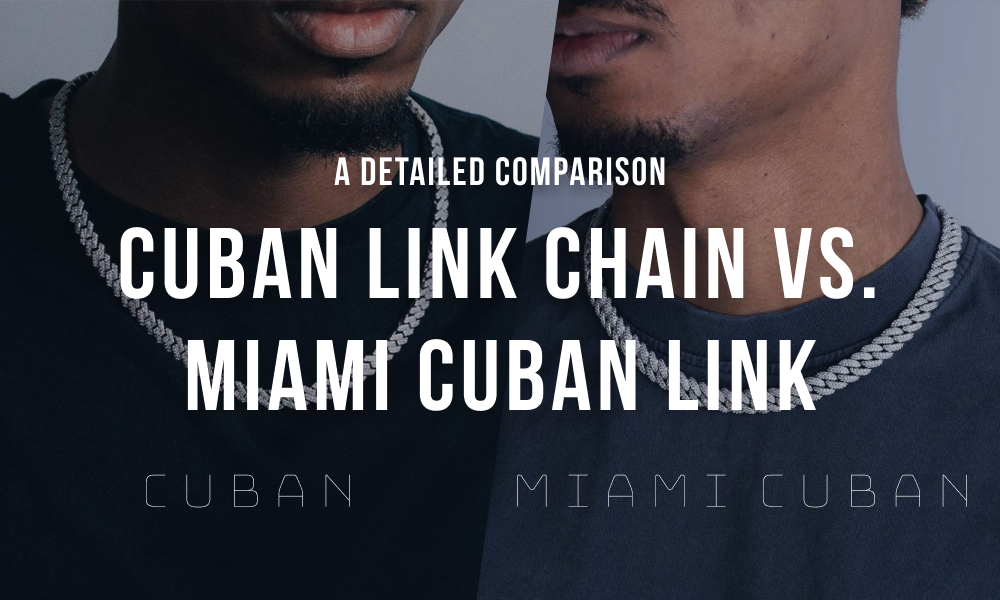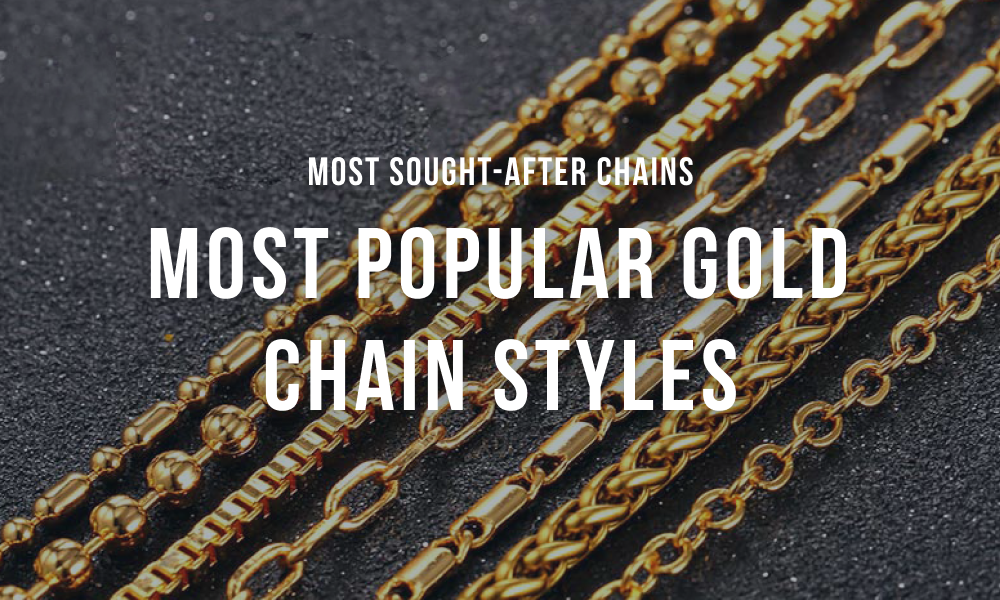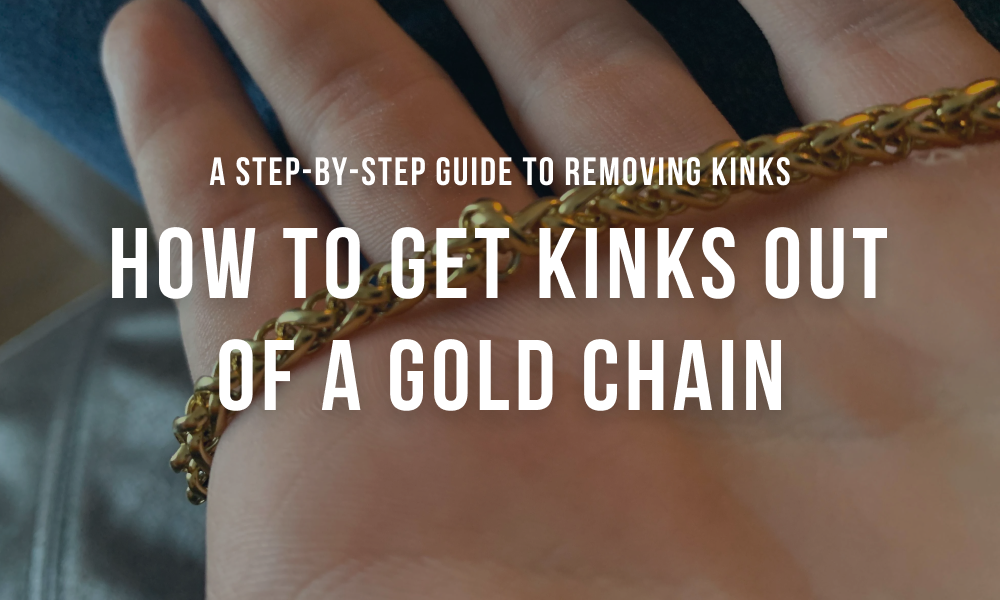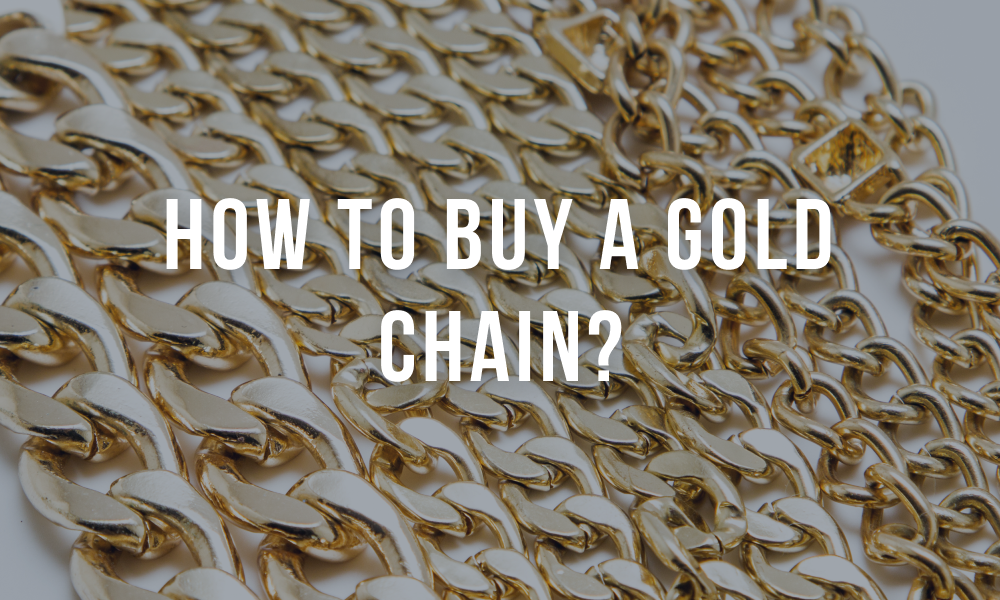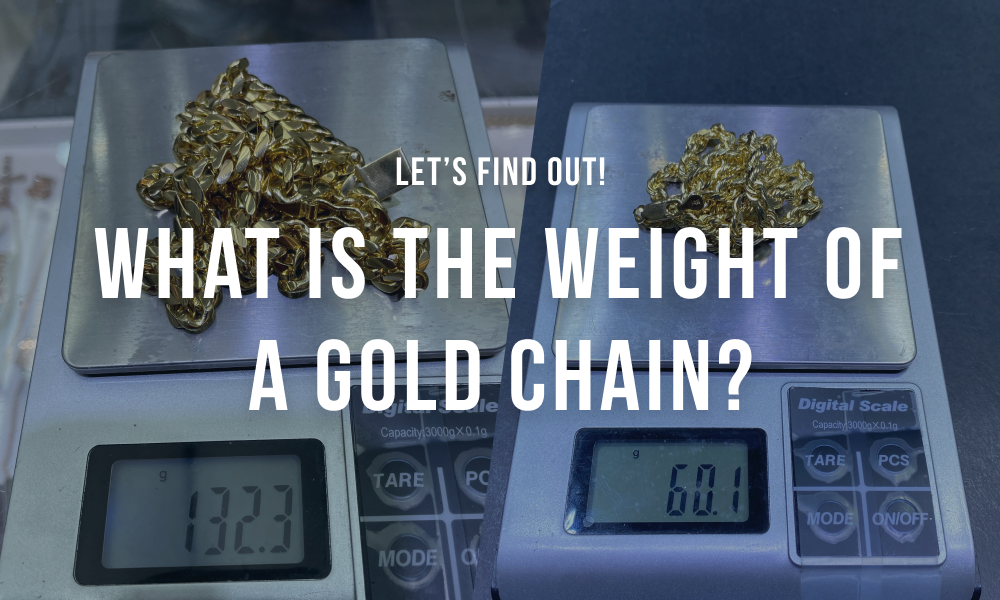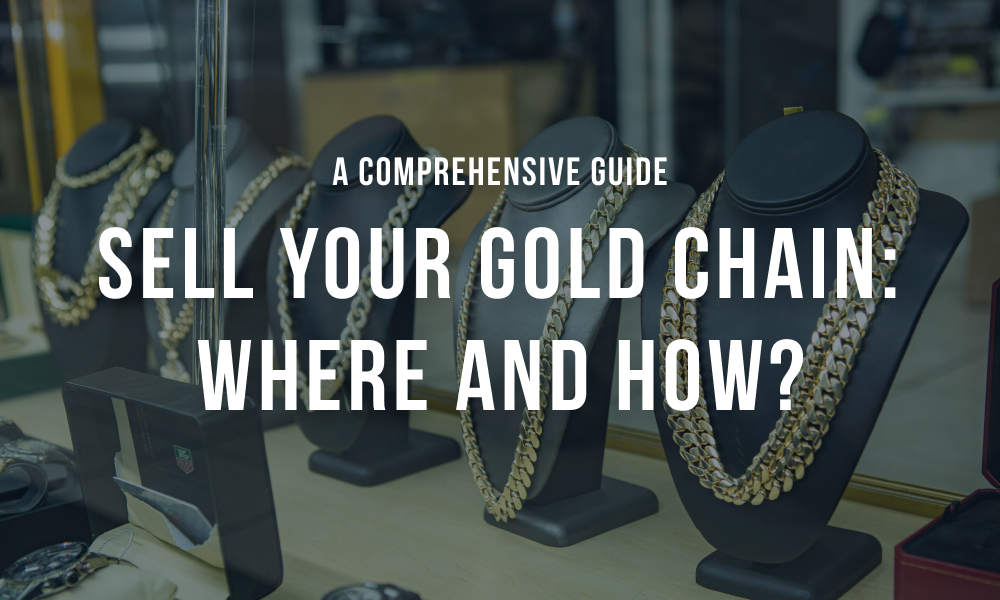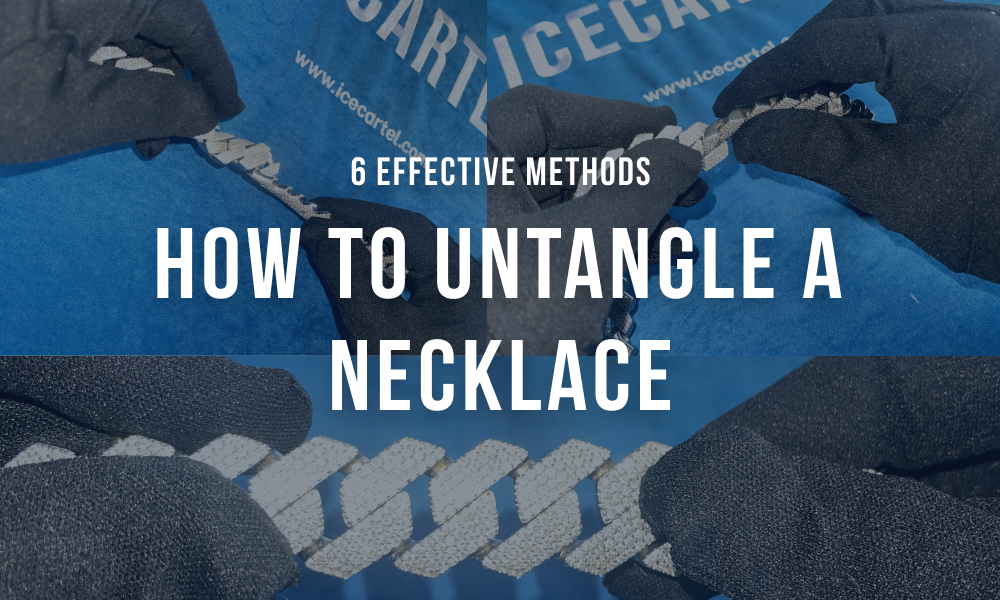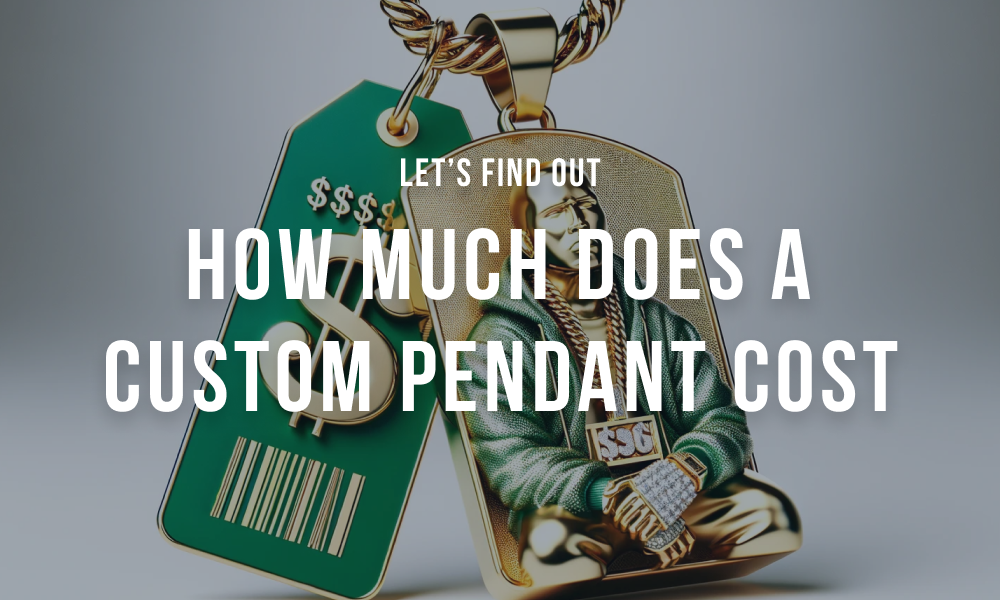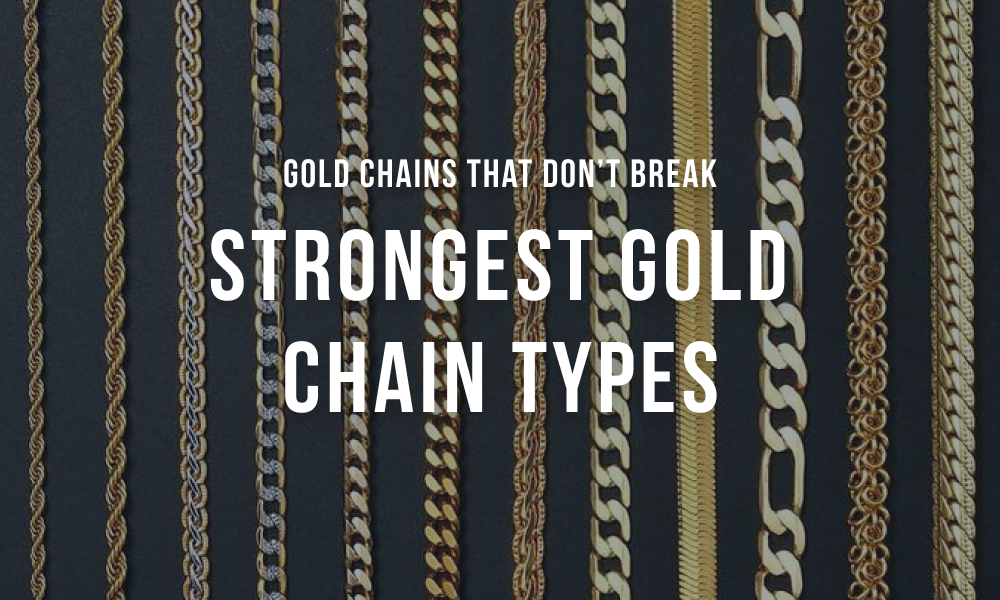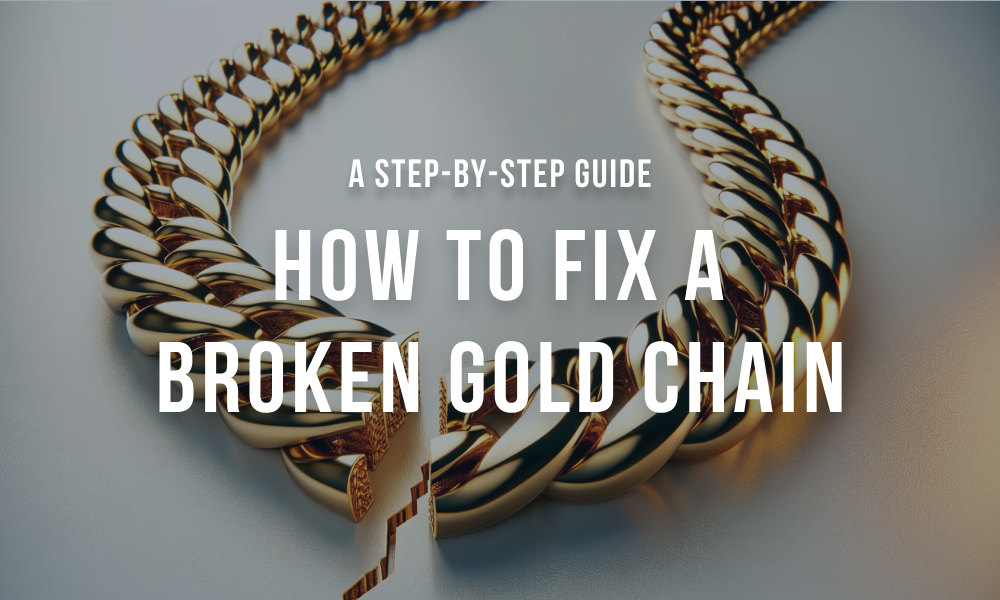Buying a real gold chain should be an exciting experience, not a gamble. With so many fake chains out there, knowing how to spot the genuine one is super important for collectors and shoppers. This guide is your go-to resource for separating the real bling from the phonies.
While gold chains are beautiful and valuable, getting tricked by counterfeits is a real bummer. Real gold pieces are special investments that should make you happy, not doubtful. Learning to identify authentic chains lets you indulge your passion with total confidence.
Get ready to become a gold chain pro! This guide teaches you all the tips and tricks for inspecting markings, checking weight, running simple tests, and more. By the end, you'll be a skilled detective who can sniff out fake chains a mile away.
Check for Hallmarks and Stamps

Authentic gold jewelry is typically stamped with hallmarks that indicate its karat purity, such as “14K” or “18K,” and the manufacturer’s mark. These hallmarks are a form of consumer protection, a guarantee of the gold’s purity. The absence of such markings often suggests that the jewelry may not be made of real gold.
In recent times, hallmarking standards have evolved to provide even more assurance to consumers. For instance, effective from April 1, 2023, a new hallmarking procedure includes a unique six-digit alphanumeric code, allowing buyers to verify the authenticity of their gold purchases. This code is linked to a database that records the hallmarking details, providing a transparent trail from the piece of jewelry back to its certification.
Current gold hallmarking standards require that all gold products sold must be hallmarked, which includes the sponsor’s or maker’s mark, a metal and purity (fineness) mark, and an assay office mark. In some countries, items weighing less than a certain amount, such as 1 gram, are exempt from hallmarking (learn more here).
The Indian Standard on Gold Hallmarking IS 1417:2016 specifies grades for hallmarking of gold jewelry/artifacts, which include 14 Carat (585), 18 Carat (750), and additional grades like 20 Carat (833), 22 Carat (916), 23 Carat (958), and 24 Carats (995). This standard ensures that the gold content in jewelry is precisely what it claims to be, providing a reliable measure of quality and value.
When examining gold jewelry for authenticity, it’s important to look for these hallmarks. However, it’s also advisable to have the gold assessed by a professional, as they have the tools and expertise to perform more complex tests that can confirm the gold’s authenticity beyond what is visible to the naked eye.
Conduct an Acid Test
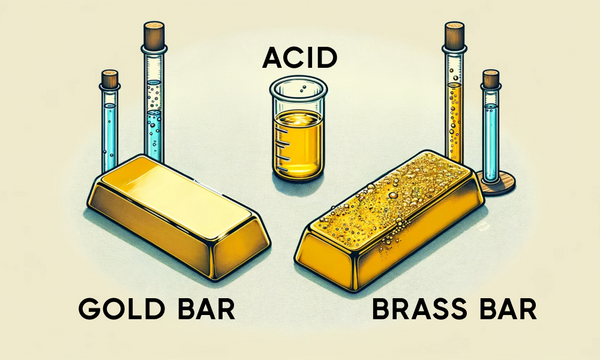
The acid test is indeed a more definitive method for testing the authenticity of gold. It involves applying a small drop of nitric acid to a less visible part of the gold item and observing the reaction. Genuine gold will show no reaction, meaning it will not change color or fizz when the acid is applied. On the other hand, non-gold metals or lower karat gold will react by changing color or fizzing.
This test is sensitive and requires a careful approach. It’s recommended that it be performed by professionals who are experienced in handling acids and precious metals. Professional jewelers and certified testing services use a variety of acids corresponding to different karat levels to determine the purity of gold. For example, an 18K acid solution is used to test for 18 karat gold.
When conducting an acid test, a scratch test is typically performed first. This involves making a small scratch or notch on the gold item and then applying the acid to this scratched area. The reason for this is to ensure that the acid is testing the actual gold and not any potential plating or covering.
It’s important to note that the acid test can potentially damage the item being tested if it’s not done correctly. That’s why it’s crucial to have it done by someone with the right expertise and equipment. If you’re considering having an acid test done on a piece of gold jewelry, you might want to consult with professional gold testing services that can provide accurate results without risking damage to your valuable item.
Perform a Magnet Test
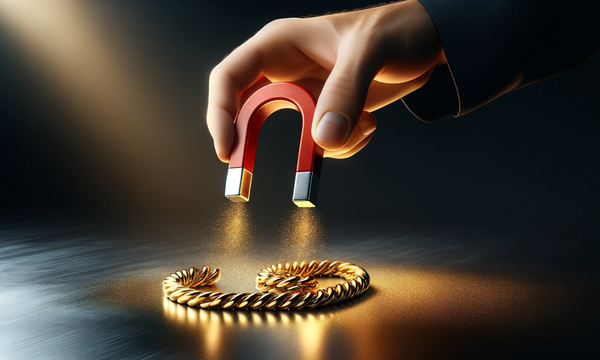
Real gold is indeed non-magnetic, which means it won't be attracted to a magnet. This property can be a quick and easy way to check if a gold chain is genuine. If you hold a magnet up to a gold chain and it pulls towards the magnet, the chain is likely not made of pure gold or may be gold-plated with a magnetic core.
However, the magnet test has its limitations. Some counterfeit gold jewelry is crafted using non-magnetic metals to pass this basic test. For instance, metals like stainless steel can be non-magnetic, especially austenitic stainless steel, which contains higher amounts of nickel. Tungsten, another non-magnetic metal, is often used in fake gold bars because it has a similar density to gold, making it difficult to distinguish based on weight alone.
While the magnet test can be a useful initial check, it should not be the sole method for verifying the authenticity of gold. Other tests, such as the acid test, hallmark verification, and professional appraisals, should be employed in conjunction to provide a more accurate assessment of whether a gold chain is authentic.
Counterfeiters have become adept at using non-magnetic metals like stainless steel to create convincing imitations, undermining the reliability of the magnet test. Additionally, tungsten, a non-magnetic metal that shares density characteristics with gold, is frequently utilized in counterfeit gold bars to deceive individuals relying solely on weight.
To enhance the reliability of gold authenticity checks, it is recommended to consider various testing methods. The acid test involves applying nitric acid to the metal, and the reaction (or lack thereof) can indicate the presence of gold. Hallmark verification involves examining the jewelry for manufacturer's marks, which can provide information about the gold's purity. Professional appraisals by qualified experts are another crucial step, as they can assess various aspects, including the item's craftsmanship and historical context.
In conclusion, while the magnet test serves as a quick and accessible method, a comprehensive approach combining multiple verification methods is essential to accurately determine the authenticity of gold. This cautious approach helps guard against the increasing sophistication of counterfeit practices and ensures a more reliable assessment of the true value and nature of gold jewelry.
Observe Color and Discoloration
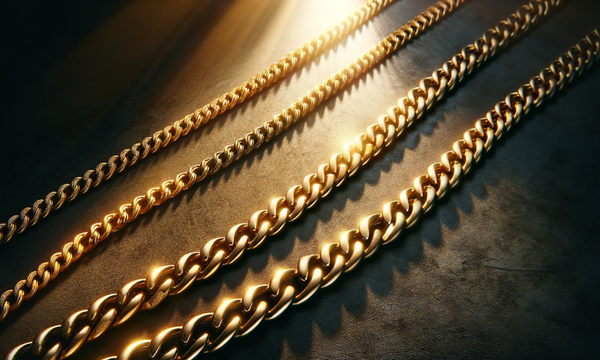
Observing the color and discoloration of gold can be a telling sign of its authenticity. Real gold, due to its low reactivity, maintains its rich, consistent hue and does not tarnish or corrode over time. This is because pure gold does not react with oxygen, meaning it won't oxidize and change color as other metals do.
However, gold alloys, which mix gold with other metals like silver or copper, may show signs of discoloration due to the higher reactivity of these additional metals. The rate at which a gold alloy discolors can vary depending on the specific blend and the karat value of the gold. Higher karat gold alloys, containing a greater percentage of pure gold, are less likely to discolor quickly.
When examining a gold chain, look for a consistent, even color throughout the piece, including high-contact points like clasps and links. A uniform, rich yellow hue indicates real gold. In contrast, areas of discoloration, wear, or color variation could suggest the chain is gold-plated rather than solid gold.
Gold-plated jewelry has just a thin surface layer of real gold over a core of another, less valuable base metal. Over time, friction from normal wear and exposure can rub away this plating, revealing the discolored base metal underneath. Environmental factors like chemicals, acids, or chlorine can also accelerate this process, causing faster degradation of the gold plating.
To identify gold-plated pieces, look closely for markings like "GP", "GEP", "RGP", "HGE", or "HGP" which indicate gold plating rather than solid construction. If no such markings are present but you see discoloration, it's advisable to have the piece professionally tested to definitively assess its gold content and authenticity.
While color evaluation can provide helpful clues, it should be combined with other authentication methods like the acid test, magnet test, weight assessment, and examining markings/hallmarks. A professional jeweler has the expertise to comprehensively analyze multiple factors for the most reliable determination of a gold item's authenticity.
Consider Weight
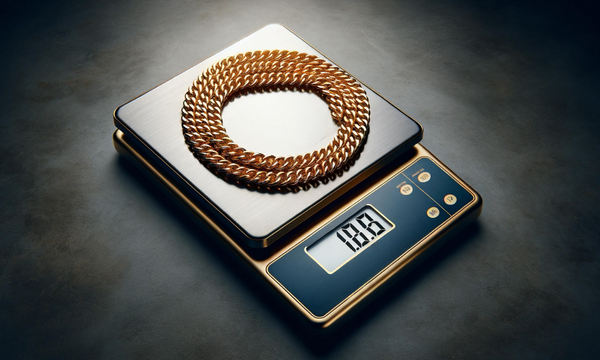
Weight is a significant factor when assessing the authenticity of a gold chain. Gold's high density means that a genuine gold chain will feel notably heavy relative to its size. This heft is due to gold's specific gravity, which is approximately 19.32 g/cm³. When you compare this to common metals used in jewelry, such as silver (10.49 g/cm³) or copper (8.96 g/cm³), the difference in weight is palpable.
Counterfeit gold chains may indeed feel lighter than expected if they are made from less dense base metals like aluminum, zinc alloys, or pot metal. However, some unscrupulous counterfeiters use deception by incorporating heavy metals like tungsten or lead, which have densities similar to gold at 19.25 g/cm³ and 11.34 g/cm³ respectively. This can create a chain that misleadingly feels as weighty as real gold.
To accurately determine if a gold chain's weight corresponds to genuine gold content, one precise method is to calculate its overall density. This involves carefully measuring the chain's mass and volume, then calculating the density using the formula density = mass/volume. If the calculated density value closely matches gold's density of around 19.3 g/cm³, it increases confidence the chain is authentic.
However, this density calculation method requires very precise measurements and some scientific know-how, so it is often best left to professionals with the proper equipment. Jewelers and certified appraisers are trained in advanced authentication techniques. They may use highly accurate scales, displacement methods, or even electronic gold testers that assess the metal's electrical conductivity - a property that correlates with gold purity and density.
No single test is 100% definitive, but taking a comprehensive multi-factor approach provides the highest confidence in judging a gold chain's authenticity. Weight is one crucial piece of evidence, especially when analyzed by experienced experts.
Seek Professional Appraisal
Seeking a professional appraisal is the most reliable way to determine the authenticity and value of a gold chain. Professional jewelers and appraisers have access to specialized tools and possess the necessary expertise to perform detailed assessments of gold items. These evaluations can include tests for metal purity, weight, and examination of craftsmanship, which are beyond the scope of home testing methods.
When choosing a professional appraiser, it’s essential to select someone with a strong reputation and the proper credentials. Look for appraisers who are certified by recognized organizations and have a track record of providing accurate and unbiased appraisals. It’s also advisable to check customer reviews and ratings, and to ask for referrals from trusted sources.
A professional appraisal is particularly important if you plan to insure your gold jewelry, as it will provide the detailed documentation required by insurance companies. An appraisal can also offer peace of mind if you’re considering selling your gold, ensuring that you receive a fair price based on the current market value.
Moreover, the value of gold can fluctuate significantly, so an appraisal can help you understand the current market value of your gold chain. This is crucial for various purposes, including insurance coverage, estate planning, resale value, and division of assets.
Explore Genuine Gold Chains at Icecartel
Icecartel is a premier online destination for those seeking genuine, high-quality gold chains. With a commitment to authenticity and excellence, Icecartel offers a curated selection of exquisite gold chains that are sure to impress.
Exclusive Gold Chain Designs
Icecartel offers a diverse range of individual chain designs, catering to various tastes and preferences. Their collection includes an extensive array of Moissanite chains in different styles and sizes, crafted from high-quality materials such as 14K gold and 925 silver. Here's a glimpse into some of the remarkable chain designs available:
- Material: 925 Silver
- Features: Tennis style, available in three colors, unisex
- Sizes: All sizes
- Price: $366 (discounted from $512.4)

- Material: 14K Gold
- Features: Cuban link style, available in 14k Yellow gold, unisex
- Price: $550 (discounted from $770)
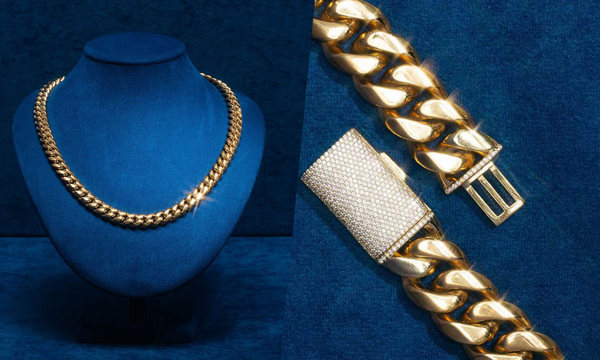
- Material: 14K Gold
- Features: Cuban link style with four rows, available in three colors, unisex
- Price: $1,696 (discounted from $2,374.4)
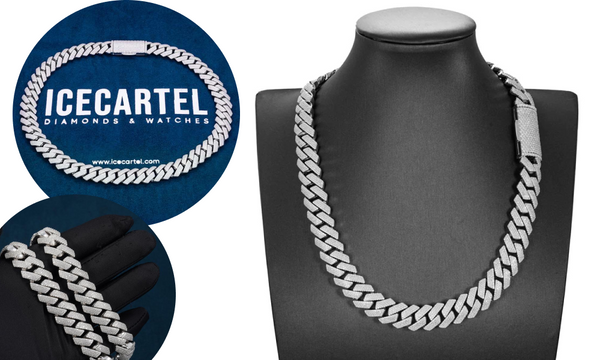
- Material: 14K Gold
- Features: Miami Cuban link style with baguette stones, available in three colors, unisex
- Price: $1,900 (discounted from $2,660)

These are just a few examples, and Icecartel offers a huge variety gold chains in their collection. Customers can choose from various styles, sizes, and customization options.
The brand emphasizes its bespoke and custom jewelry services, allowing customers to request quotes for personalized pieces. The made-to-order items showcase the brand's commitment to providing unique and tailor-made jewelry experiences.
Trusted Source for Authentic Gold
At Icecartel, authenticity is paramount. They take pride in sourcing their gold chains from reputable suppliers and meticulously verifying the genuineness of each piece.
With stringent quality controls in place, you can be assured that every gold chain you purchase from Icecartel is the real deal, free from limitations or compromises.
Conclusion
In summary, authenticating a gold chain involves careful visual inspections, practical tests, and relying on professional expertise. This guide covers essential methods, including hallmark checks and acid/magnet tests, to distinguish real gold from imitations.
By following these strategies and choosing reputable retailers like Icecartel, you can confidently invest in genuine gold chains. Advances such as electronic gold testers and XRF analysis continue to enhance precision in gold authenticity verification.
No more guesswork or uneasy feelings when eyeing that shiny new chain. With this guide's secrets, you can buy and sell gold with certainty. Unmask those cheap imitations and only treat yourself to the luxury you truly deserve!





